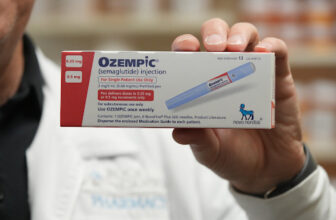
[adinserter block=”3″]
Various symptoms may indicate the presence of sexually transmitted infections or diseases (STIs/STDs) or STD throat. While most people associate these symptoms with sexual activity involving the genitals or anus, it is essential to note that any sexual activity that consists of the mouth, lips, or tongue can also pose a risk of transmission. This article outlines the signs of STIs/STDs in the mouth, factors that can increase the risk of infection through oral sex, and ways to protect oneself.
What Are Signs of STDs in Your Mouth?
According to the Centers for Disease Control and Prevention (CDC), those signs are not always present. However, if you are seeing some signs that are spreading infection in your mouth might be the cause of STDs. We have listed some signs and symptoms that you should know that are:
-
Sore throat
-
Fever blisters
-
Tonsilitis
-
Redness with white spots
-
Painless sores in the mouth
-
Swollen Tonsils
-
Swollen Lymph Nodes
-
Fatigue
-
Difficulty swallowing
-
Inflammation around the mouth
-
Strep throat
- STD bumps on tongue
Everybody’s response is different due to the difference in immunity. Therefore, if you have not encountered any STDs yet. That does not mean you will not be affected by it.
STI or STD: What’s the Difference?
Before we begin with the signs of STDs in the mouth, it is essential to understand the distinction between STIs and STDs. STIs refer to infections transmitted through sexual contact, which do not often show visible symptoms. However, STDs are STIs that have progressed to the stage where symptoms become evident. This means you may have an STI without symptoms, thus making regular testing crucial.
Understanding Oral Sex
Oral sex involves various sexual acts in which the mouth, lips, or tongue contact the genital or anal areas. These include:
1. Cunnilingus: Oral contact with the vagina.
2. Fellatio: Oral contact with the penis.
3. Analingus: Oral contact with the anus.
How can one get STDs in the mouth?
Many people ask “Can you get STD from oral?” The answer to this question is written down below.
-
If infected genital tissues come into contact with the mouth and throat tissues, an STI can be transmitted in both directions. It is also important to note that sexually transmitted infections (STIs) can spread through sexual fluids and skin-to-skin contact.
-
When infected genital tissues come into contact with the tissues in the mouth and throat, an STI can be transmitted in both directions. Knowing that STIs can be sent without exchanging bodily fluids is essential.
-
It’s important to note that STIs and STDs are different. STIs can be transmitted through sexual activity but may not show any visible symptoms, but it must be noticed that STIs are STDs that have progressed to the point where symptoms are noticeable.
-
Regular testing is crucial to detect the presence of an STI since it does not show any visible signs. Moreover, it’s possible to have an STI in multiple locations simultaneously, like the genitals and the throat. Some STIs can even spread within the body and could be transmitted through oral contact with the infected area, like gonorrhea.
Also Read: #NotSoShy: 6 Common STDs in Men
Types of STDs in the mouth
Several STDs of the throat, that can occur in the mouth could include any of the following:
-
Chlamydia: Although it can be contracted through oral sex, it is commonly spread through vaginal or anal intercourse. Symptoms of chlamydia are typically mild, with a sore throat being one of the common signs.
-
Gonorrhea: Gonorrhea is caused by Neisseria gonorrhoeae bacteria, which is also a common STI. It mainly affects the throat, genitals, urinary tract, and rectum. Symptoms of gonorrhea are often absent, but a sore throat may be an indicator.
-
Syphilis: Syphilis is an infection caused by Treponema pallidum; it is rare compared to other STIs. It affects the mouth, genitals, anus, and rectum. Primary syphilis presents as painless sores (chancre) in the genital, rectal, or oral areas. Secondary syphilis can manifest as a skin rash, sore throat, and other symptoms.
-
Herpes Simplex Virus Type 1 or (HSV-1): HSV-1 mainly spreads through oral or genital contact. It can cause oral, genital, and anal herpes. Oral herpes symptoms include cold mouth, lips, and throat sores.
Also Read: How Long Can HPV Be Dormant?
-
Herpes Simplex Virus Type 2 or (HSV-2): HSV type 2 is primarily transmitted from vaginal or anal intercourse but can also be transmitted through oral sex. Symptoms are similar to HSV-1, including blisters or sores in the mouth and genital areas.
-
Human Papillomavirus (HPV): HPV is a common STI affecting the mouth, throat, genitals, cervix, anus, and rectum. Some types of HPV can cause visible warts in the throat or voice changes, while others can lead to head and neck cancers.
-
HIV: Although vaginal and anal intercourse are the main ways through which HIV is transmitted, the chances of acquiring or transmitting HIV through oral sex are very minimal. HIV infection in the early stages may present itself with flu-like symptoms, but it can also remain asymptomatic for many years.
Reducing Your Risk of Contracting Oral STIs
There are specific steps that you can take to reduce your risk of contracting or transmitting oral STIs:
How to Get Tested for STIs?
-
The CDC recommends regular STI screenings based on certain factors, including age, sexual activity, and the presence of new or multiple sex partners. The types of tests include:
-
Chlamydia and Gonorrhea: These tests involve a urine sample or swabs of the genital area, throat, or rectum.
-
HIV: An HIV test requires a swab inside your mouth or a blood sample.
-
Herpes: A swab of the affected area is used for testing when symptoms are present, while a blood test can detect HSV even in the absence of symptoms.
-
Syphilis: Testing involves a blood sample or swab from a sore.
-
HPV (warts of the mouth or throat): Diagnosis can be visual if symptoms are present, or a Pap test (Pap smear) can be performed.
-
When to Seek STI Testing
-
If you are sexually active, it’s advisable to undergo regular STI screening. It would help if you considered getting tested:
-
If you experience unusual genital, oral, or anal symptoms.
-
If you or a sexual partner suspects or has been diagnosed with an STI.
-
Before engaging with a new partner in sexual intercourse.
-
After a sexual encounter without barrier protection like condoms.
-
Testing can be done at a doctor’s office, health clinic, Planned Parenthood, or some pharmacies, often with free or low-cost options. Home test kits are also available for added convenience.
In Conclusion
It’s essential to be aware that oral sex carries the risk of contracting or transmitting STIs. Understanding the symptoms of oral STIs, using barrier methods, and getting regular screenings are essential steps to protect your sexual health. It must be noted that “What are the signs of STDs in your Mouth” needed early detection and treatment are crucial in managing and preventing the spread of these infections.
Frequently Asked Questions
How do the oral STDs start?
Oral STDs are typically transmitted from person to person through the tongue and lips, coming in contact with the genital area.
How do oral STDs start?
Oral STDs can start with syphilis, human papillomavirus, herpes, etc.
Are STDs curable?
Pathogenic linked STIs can be curable, syphilis, chlamydia, and trichomoniasis. These viral infections can be syphilis, gonorrhea, and trichomoniasis.
How can I prevent std in the throat?
There are many ways that you can prevent by using a condom, dental dam, or barrier methods during oral sex.
What STD can affect the mouth?
Chlamydia is one of the occurring STD in the mouth.
What STD with sore throat is reported?
STD and throat pain are correlated to each other and it is mainly occur in
1. Syphilis
2. Gonorrhea
3. Herpes
4. Chlamydia
Written by
Latika Rajput
[adinserter block=”3″]
Credit : Source Post






